Science Program

Unlocking a World of Opportunities: Discover the Science Program at Ekya
Learning Area Purpose

The Science Program equips learners to:
- Cultivate a mindset of curiosity, creativity and scientific inquiry to foster deeper and meaningful science learning.
- Engage in scientific practices to understand the dynamic nature of science.
- Develop interdisciplinary thinking and collaborative skills for problem-solving.

The Science Program is designed based on a three-dimensional approach to learning Science. We nurture a fascination with the natural world, guiding students to explore scientific principles and phenomena. The curriculum focuses on a deeper understanding of science concepts, active, hands-on learning of Science, application of concepts, and integration of science and engineering design principles and processes to solve real-world problems.
Key Learning Experiences:
- Three-Dimensional Approach: We follow the three-dimensional learning approach that integrates Science and Engineering practices, Crosscutting concepts and Core ideas of the disciplines.
- Using Science Kits: Students use “Science Kits” that are curated and designed to promote active engagement and experiential learning through hands-on experimentation and observation in the Science Classroom.
- Using Fiction in the Primary Science Classroom: Students read interesting stories from fiction and non-fiction to understand concepts and their application in the real world while also learning attitudes and behaviours of scientists.
- Using Science Labs: Our state-of-the-art Science Labs offer hands-on and engaging experiences, enhancing the nature of science learning can increase student motivation and interest in science to foster a lifelong appreciation for the learning area.
Three-Dimensional Learning Approach
We follow the three-dimensional learning approach that integrates Science and Engineering practices, Crosscutting concepts and Core ideas of the disciplines.
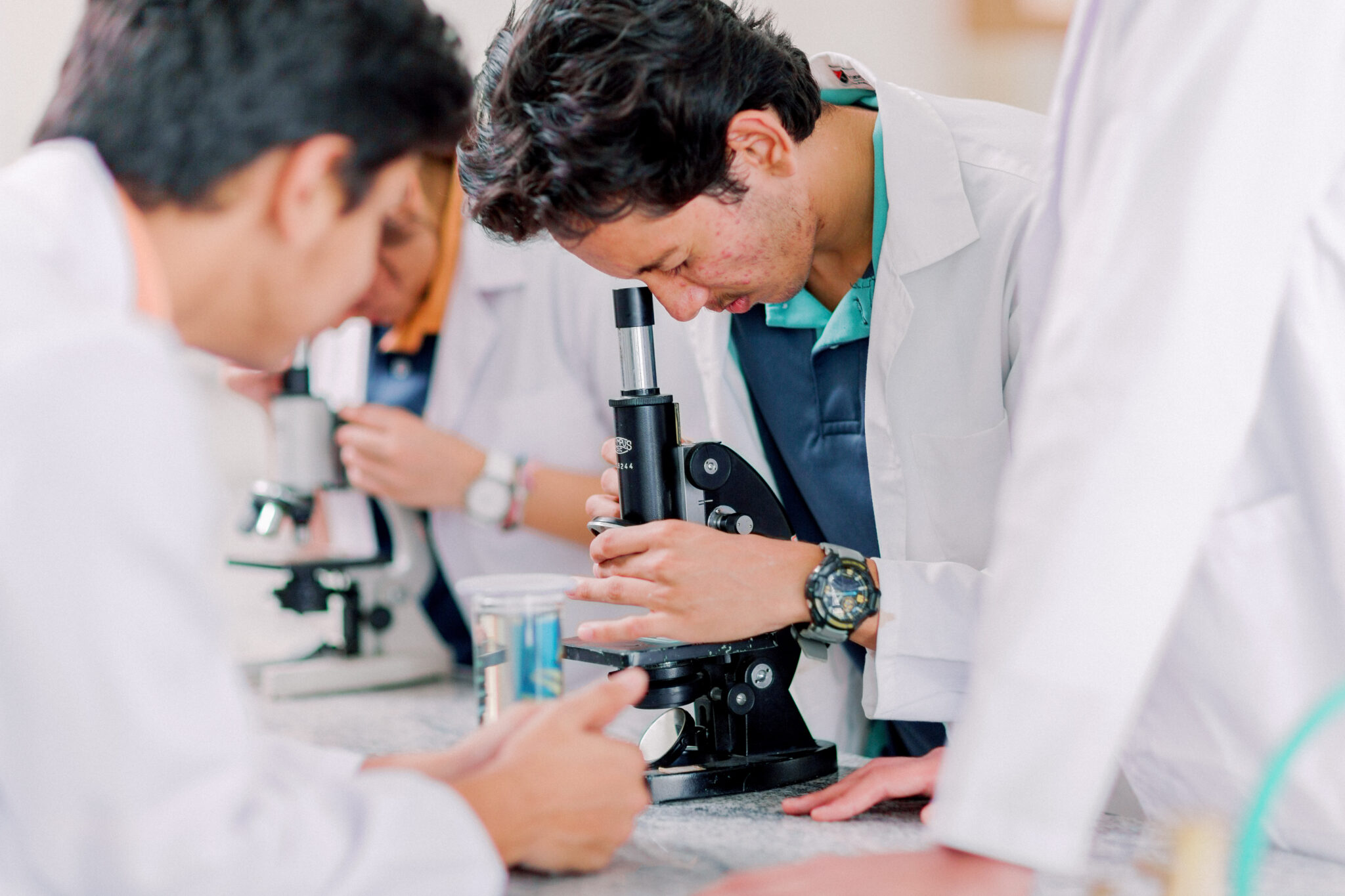
Science and Engineering Practices(SEP)
Science and Engineering Practices (SEP) are practices that engineers use as they design and build models and systems. The key focus of this program are Engineering Design Challenges and the process of scientific inquiry.
For example, in the Grade 6 curriculum students design and build a water filtration device using commonly available materials, following the design process used by engineers and scientists who developed the International Space Station Water Recovery System for NASA. Students use engineering design principles at various grade levels to build, test, measure, and analyse data to create improved yet functional prototypes.
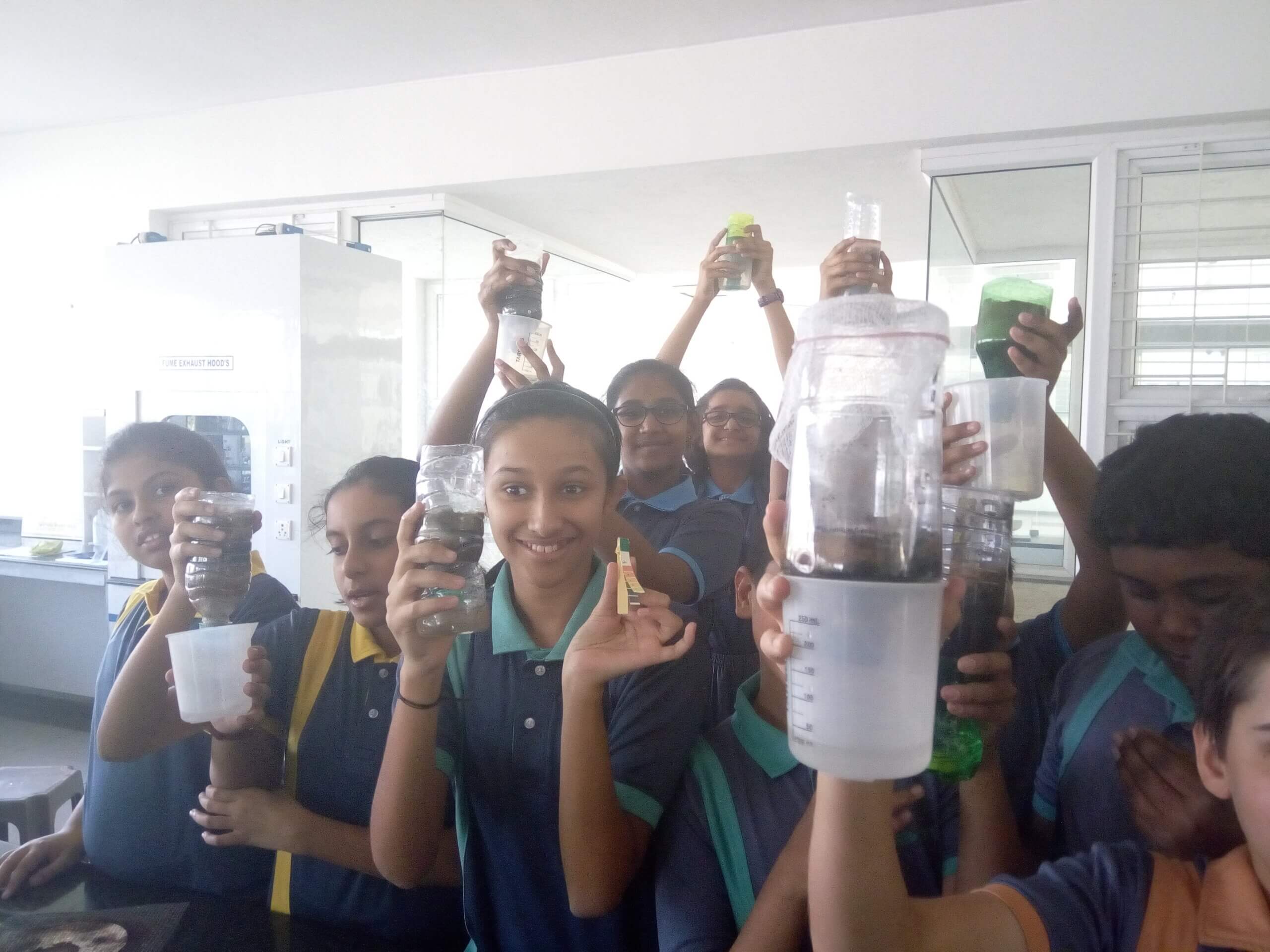
Crosscutting Concepts
Crosscutting concepts have applications across all domains of science as they provide organisational schema for interrelating knowledge from various science fields into a coherent and scientifically-based view of the world.
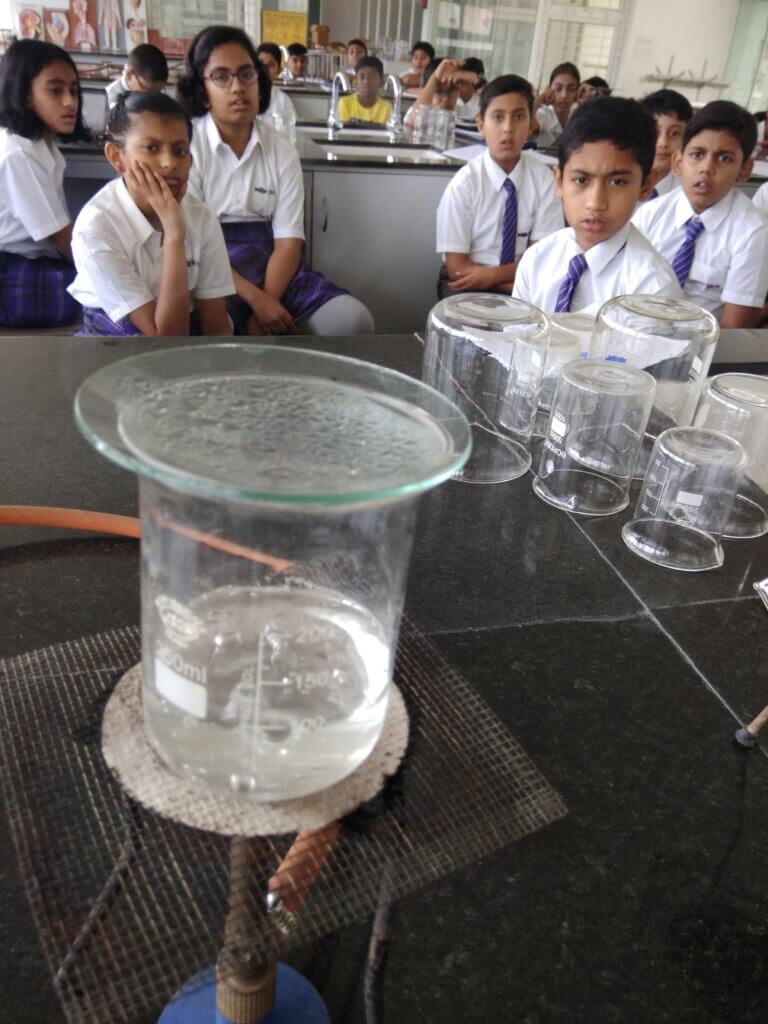
Disciplinary Core Ideas
The coherent progression of disciplinary core ideas enables students to comprehend fundamental and complex concepts across different disciplines. The curriculum encourages students to develop skills that are applicable in real-world situations, such as problem-solving, conducting investigations, and making evidence-based arguments.
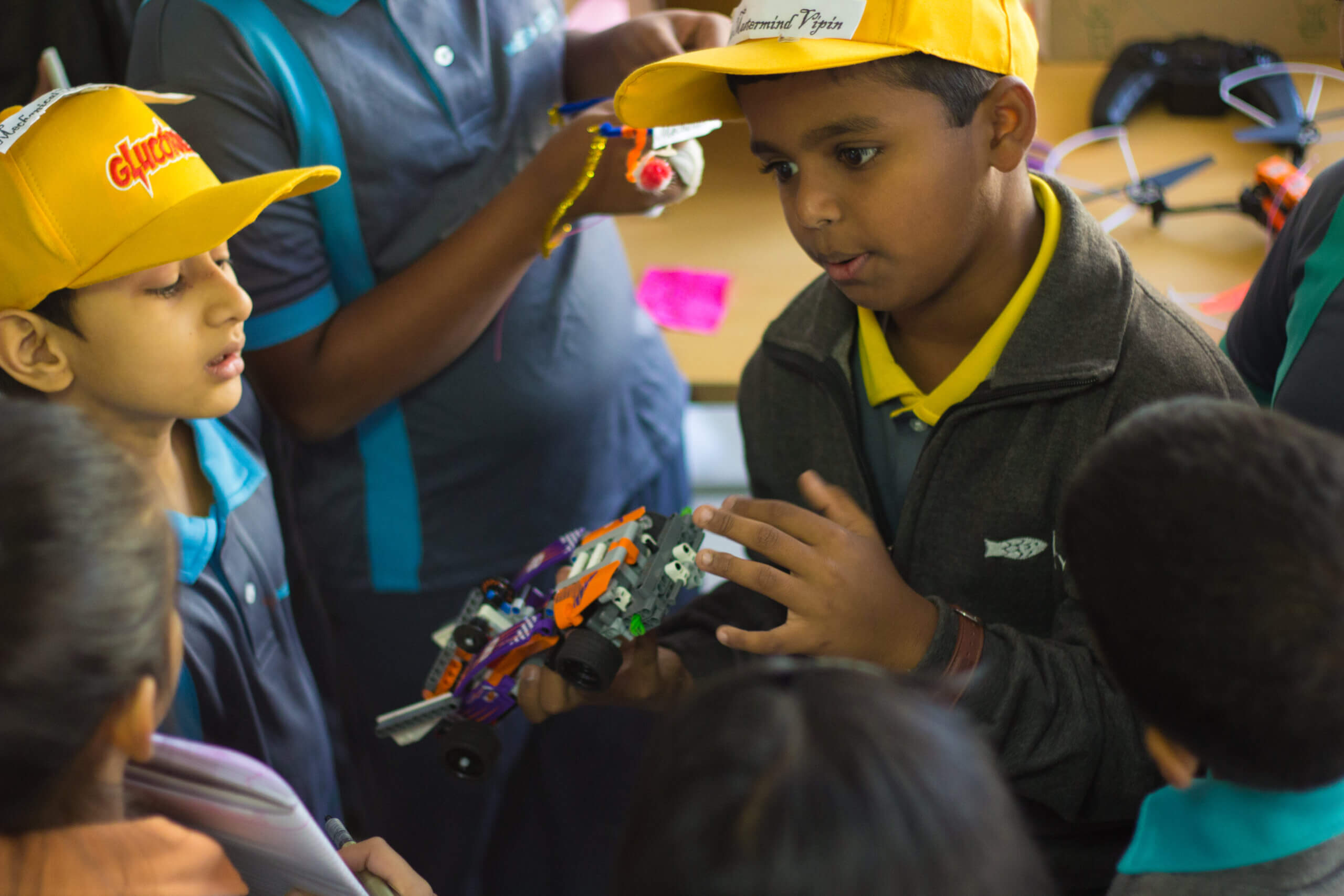
Students use “Science Kits” that are curated to align with the three-dimensional approach to science learning. These are designed to promote active engagement and experiential learning through hands-on experimentation and observation.
For example, our Grade 4 kit includes materials to construct an electromagnet that will help students understand the concept of Electricity and Magnetism.
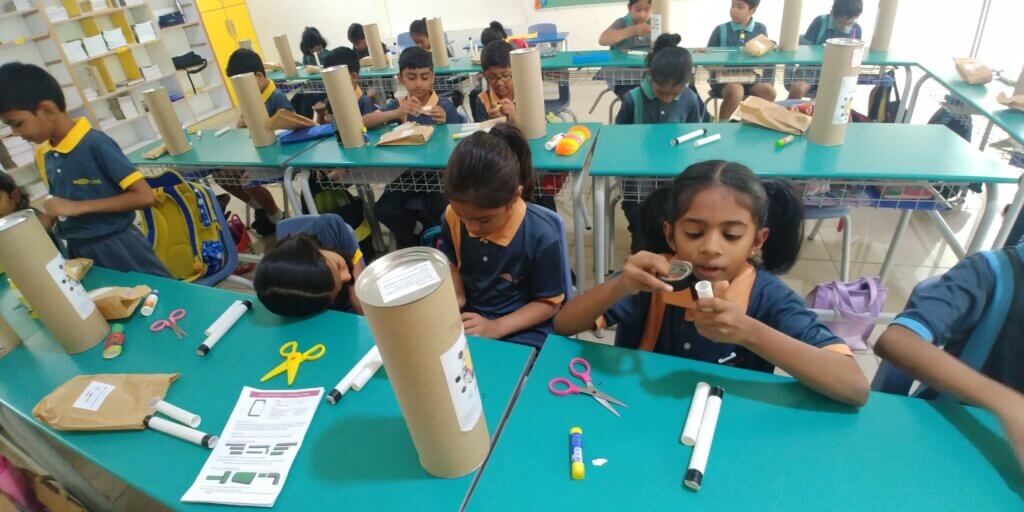
Our Language program equips individuals with the tools to navigate a world of diverse communication. We foster a love for reading, writing, and communication, empowering students to become articulate and expressive individuals. The program cultivates multilingualism from an early age fostering cognitive flexibility and broadening cultural perspectives, preparing children to thrive in an increasingly interconnected world.
Languages Offered
| Category | Languages | Grades |
|---|---|---|
| First Language | English | Grades 1-12 |
| Second Languages | Kannada, Hindi, French | Grades 1-10 (French from Grades 5 & 6) |
| Third Languages | Kannada, Hindi, French | Grades 5-8 |
Learning Area Purpose
The Language program equips learners to:
- Make meaning of the language
- Understand a variety of texts and develop an informed appreciation for literature
- Communicate effectively and creatively, according to the medium and the audience

Key Learning Experiences
Love to Read Program
Ekya’s ‘Love to Read Program’ encourages students to explore new genres, authors, and stories, developing essential skills and fostering a lifelong love for reading. The program includes experiences such as –

- Author Talks: Our students engage with and draw inspiration from popular Authors
- Guided Levelled Reading Program: Implement a program to support all readers and their diverse reading abilities.
- Literary Circle: Foster literary engagement through the School’s Literary Circle.
- School Book Club: Participate in the School Book Club.
- Reading Initiatives: Introduce initiatives like Drop Everything And Read (DEAR) time, Reading Week, and Read-aloud events to promote reading.
- Ekya Publications: Curate and showcase student work through Ekya Publications.
- Creating Literature: Create literature to empower students to become confident writers.
Immersion into Fiction, Nonfiction, and Poetry
Ekya, through our language program, students will delve into diverse genres of books. Each student is distinct, so we encourage them to explore various genres and discover their ideal fit.

- Inclusion of Indian Authors: Award-winning Indian authors’ works are featured in contemporary Indian settings.
- Building Empathy: Diverse book titles help build empathy and understanding among students.
- Overview of the Book Plan: A plan designed based on international benchmarks and standards prepares students for various language uses.
- Grade-Specific reference books: Grade-specific books, such as ‘Sunita Williams- A Star in Space’ by Aravinda Anantharaman for Grade 5, are provided.
- Books About Books: Early grades start the year with stories that celebrate books and libraries, fostering a love for reading from a young age.
- Summer Reading Program- A structured summer reading program encourages children to read during school breaks.
Writing Process
The writing process is a significant part of the language program where all writing is treated as a creative act which requires time and positive feedback. Students use feedback to modify their work and have to return to the prewriting step to develop and expand their ideas.

- Prewrite: Students generate ideas, choose a topic, and outline their approach.
- Research: Sources are identified, information is gathered, and findings are categorised.
- Draft: The next step is to write freely, review their work, and revise until satisfied.
- Revise: Then, paragraphs are reorganised, unclear language is replaced, and content is refined.
- Edit & Proofread: The final step involves reviewing formatting, grammar, and punctuation to ensure a polished product.
Language Tools
Ekya’s language program employs interactive techniques like Reader’s Theater and Author’s Chair to enhance literacy skills, foster creativity, and build community, making student thinking visible and deepening comprehension through peer collaboration.

- Reader’s Theater: Perform scripts to enhance reading fluency and comprehension.
- Reading Jigsaws: Read, summarise, and share sections of a text to piece together the full story.
- Author’s Chair: Share writing and receive feedback to build a supportive writing environment.


